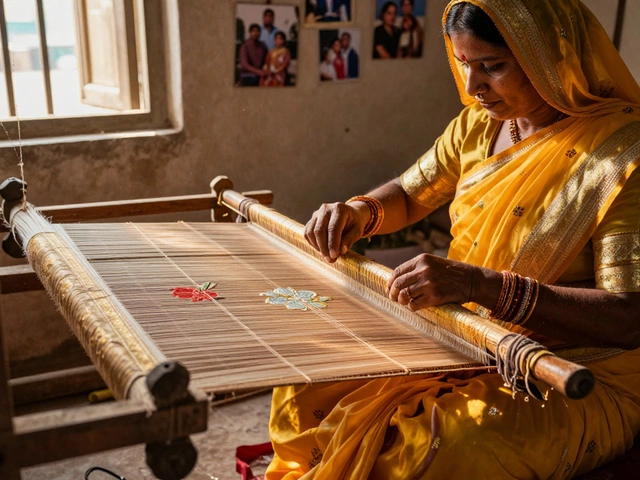Who Owns Cipla India? Unpacking the Pharma Giant’s Stakeholders

Think Cipla, and most people picture shelves lined with affordable medicines, not a complex web of owners and big shots behind the scenes. But knowing who actually owns Cipla India can tell you a lot about its decisions, future moves, and even the kind of medicines you end up using. This isn’t just company trivia—ownership influences everything from research spending to drug prices.
Cipla didn’t start out as the pharma behemoth it is today. Its roots go back almost a century, and the faces at the top have definitely changed since those early days. Family founders, powerful investment banks, and some surprising overseas investors all shape what Cipla does next—and whether it stays true to its Indian identity or stretches further onto the global stage.
- Cipla at a Glance
- The Journey from Family-Owned to Public Company
- Promoters and Founding Legacy
- Major Shareholders and Foreign Stakes
- Why Ownership Structure Matters
- Tips for Investors and Industry Watchers
Cipla at a Glance
Cipla isn’t just a name you spot in pharmacies across India—it’s one of the country’s most recognized pharma manufacturers, with a footprint in over 80 countries. Founded way back in 1935 by Dr. K.A. Hamied, Cipla started as a small company focused on Indian self-reliance in medicines. Today, it’s a heavyweight, both at home and in the global generic drug scene.
The company is listed on the National Stock Exchange (NSE) and the Bombay Stock Exchange (BSE), making it a publicly traded company available for anyone to invest in. If you look at numbers, Cipla’s revenue for the financial year ending March 2024 clocked above ₹23,500 crore (roughly $2.8 billion). That’s not pocket change—it puts Cipla among the top three pharma players in the country by revenue.
Here’s a quick snapshot of Cipla’s key stats:
| Fact | Number / Detail |
|---|---|
| Year Founded | 1935 |
| Headquarters | Mumbai, India |
| Active Markets | 80+ Countries |
| Annual Revenue (FY2024) | ₹23,500 crore |
| Employees | ~23,000 |
Cipla’s product game is strong, ranging from prescription drugs and over-the-counter medicines to complex respiratory devices. Because Cipla focuses on affordable drugs, it has made a major difference in areas like HIV/AIDS treatment, selling life-saving antiretrovirals at a fraction of global costs. This approach has made the company both profitable and respected, especially as healthcare spending shoots up across India and the emerging world.
So, whenever you see Cipla branded on a medicine strip, remember: there’s a huge business machine making sure those meds reach hospitals, clinics, and regular folks—not just in India, but just about everywhere the sun shines.
The Journey from Family-Owned to Public Company
Back in 1935, when Cipla was set up by Dr. K.A. Hamied, it operated nothing like the publicly traded pharma giant you see today. If you picked up a box of Cipla’s medicines in the early decades, you were using a product from a tightly controlled, family-run business. The Hamied family made the big decisions, focused on making medicines for India, and built their own reputation for low-cost drugs that actually worked.
The real shift started in the late 1970s and 1980s. As the rules around drug patents and pharma business got stricter, Cipla India had to adapt—and that meant raising big money. Listing on the Bombay Stock Exchange in 1985 opened the doors to public investors. The old family board widened to include other big players, and suddenly, control was split rather than sitting with just one family.
Over decades, Cipla moved toward professional management. By the 2000s, it wasn’t just Hamieds in the boardroom. Promoters still held big stakes, but foreign investment funds and Indian institutions came in strong, drawn by Cipla’s steady profits and global ambitions.
| Year | Key Event |
|---|---|
| 1935 | Founded by Dr. K.A. Hamied |
| 1985 | Listed on Bombay Stock Exchange |
| 2000s | Professional managers join leadership; institutional investment rises |
This journey from a family outfit to a true public company didn’t just change who owned the shares—it changed how Cipla India took decisions, explored international markets, and competed in the modern pharma race. If you're tracking pharma manufacturers India, this kind of shift isn’t just boring corporate history. It tells you if a company is flexible, who it listens to, and how much power ordinary investors or big funds really have.
Promoters and Founding Legacy
Let’s roll back the clock to 1935. Cipla was set up by Dr. Khwaja Abdul Hamied in Mumbai, at a time when India’s pharma scene was mostly controlled by foreign companies. Dr. Hamied wasn’t just another businessman—he wanted to make medicines for Indians, by Indians. That idea, crazy as it sounded back then, basically kicked off the journey of Cipla India as a homegrown powerhouse.
The Hamied family didn’t just build Cipla—they’ve been at the steering wheel for decades. Dr. Yusuf Hamied, son of the founder, took things up a notch. He became famous for slashing AIDS drug prices in Africa, making Cipla a global hero almost overnight. This move made headlines and showed how Cipla’s owners actually shaped real-world policies, not just profit sheets.
Now, when people talk about “promoters” in Indian companies, they’re usually pointing to the people or families who actually created the business—like the Hamieds for Cipla. Even though Cipla is now publicly traded, the promoter group (pretty much the Hamied family and their holding companies) still owns a massive chunk. As of early 2025, the promoter group holds about 33% of Cipla’s shares. That means they have real power when big decisions come up—not a side gig.
| Shareholder | Ownership (approx.) |
|---|---|
| Promoter Group (Hamied family) | 33% |
| Foreign Institutional Investors | 28% |
| Domestic Institutions | 18% |
| Public & Others | 21% |
The bottom line: that 33% holding doesn’t just look good on paper. It’s why the family can influence who gets the top jobs, what research to push, and which way the company turns next. If you track Cipla ownership or are curious about family-led companies, this kind of clout is worth watching, especially in India’s highly competitive pharma manufacturers scene.

Major Shareholders and Foreign Stakes
When people ask, “Who owns Cipla India?”, they’re usually curious about the faces and companies holding the biggest chunks of the business. In the world of Cipla ownership, there’s a mix of old family ties, big investment funds, and a handful of foreign players. Unlike some Indian pharma companies that are tightly controlled by one family, Cipla has spread-out ownership.
If you look at the recent shareholding data (as of March 2024), the promoters—the family and founding group—hold around 33.4%. This group is led by Yusuf Hamied, whose family started Cipla way back in 1935. Even though they no longer have a majority, they’re still the single largest group of shareholders. This matters because it lets them keep a guiding hand on big company decisions.
But it’s not all in the family. Here’s where it gets interesting: more than 50% of Cipla’s shares are with public shareholders. This covers both regular Indian investors and huge institutional funds that shape the company's moves.
| Type of Shareholder | Shareholding (%) |
|---|---|
| Promoter Group | 33.4 |
| Foreign Institutional Investors (FIIs) | 27.2 |
| Mutual Funds | 13.5 |
| Public & Retail Investors | 19.7 |
| Others | 6.2 |
Foreign Institutional Investors (FIIs) are a big deal in Cipla. They’ve consistently held more than a quarter of the company. You’ll find big names here, like Vanguard, BlackRock, and Government Pension Fund Global (Norway). These aren’t just numbers; they bring voting power and often push for new strategies or higher returns. Mutual funds also have their slice, signalling strong faith from Indian money managers in Cipla India’s staying power.
Here’s the key thing: no single foreign entity has enough shares to directly control Cipla, but taken together, all these institutional investors can definitely sway votes in big decisions. This also means Cipla has to watch international market trends and comply with rules set by global investors.
For anyone tracking pharma manufacturers India, this split ownership keeps Cipla pretty agile. It’s not stuck with just one vision—it has to balance local roots with global expectations. If you’re thinking of investing or just trying to understand how Indian pharma moves, keep an eye on these shareholder shifts. They often say more about where the company is headed than any annual report.
Why Ownership Structure Matters
So, why should you care about who owns Cipla India? Ownership structure directly affects everything from business priorities to how new medicines reach the market. When a company like Cipla has a clear, stable group of shareholders, things usually run smoothly—money gets invested in the right places, and research moves faster. If ownership is all over the place or constantly changing hands, confusion creeps in and growth can suffer.
Right now, Cipla’s ownership looks like this: the founding family and their trusts hold about 33% of shares, while a mix of mutual funds, foreign investors, and regular people (retail investors) owns the rest. Here’s a snapshot:
| Stakeholder | Approximate Holding (%) |
|---|---|
| Promoters (Founders and Family) | 33% |
| Foreign Institutional Investors (FIIs) | 27% |
| Mutual Funds | 13% |
| Retail/Other Investors | 27% |
When promoters hold a serious chunk of shares, you usually get long-term thinking—companies avoid risky short-term bets. If foreign funds hold big slices, you might see more emphasis on global expansion and returns. For cipla, the balance is pretty healthy, so they have a good mix of stability and international outlook.
The ownership mix also decides who gets a seat at the table (literally, at board meetings). Promoters often pick key leaders and shape the company’s culture. Big foreign investors, on the other hand, push for tighter management and sometimes shake things up if targets aren’t met.
Here’s what all this means if you’re working with, investing in, or buying from Cipla:
- Better research funding: Stable ownership means more money for new drug trials and fresh launches.
- Predictable business moves: You’re less likely to see wild risks or overnight changes.
- Access to new markets: When international investors are involved, Cipla can reach more countries and bring global medicines to local shelves.
The bottom line? With a balanced ownership pattern, Cipla India manages to keep its Indian roots strong while also listening to global trends. That’s good news for employees, investors, and anyone using its medicines.
Tips for Investors and Industry Watchers
If you’re keeping an eye on Cipla India or thinking about jumping in as an investor, the first thing you’ll want to know is who holds the strings—because changes in ownership or big stakeholder moves can shake up the whole stock price. Right now, the original promoter family (the Hamieds) holds less than 34% of Cipla, according to their latest filings in early 2025, while foreign institutional investors (FIIs) have ramped up their stake, making this company one of the big global bets within the Cipla ownership landscape. Mutual funds, retail investors, and insurance companies also have a slice of the pie.
- Watch for any news about promoters selling or increasing their shares. In 2023, for instance, rumors of the Hamied family looking to exit caused quite a market buzz and affected the stock.
- Check quarterly shareholding patterns on the Bombay Stock Exchange (BSE) or National Stock Exchange (NSE) websites—Cipla is required to publish detailed data publically, so you can track who’s buying or selling.
- Big FIIs like Vanguard, BlackRock, and Fidelity popping up in the shareholding pattern signals strong overseas confidence, but it might also mean higher volatility if global funds exit during rough patches.
- Keep an eye on regulatory changes by Indian authorities, especially if there’s a cap on foreign ownership or new pricing controls in the Indian pharma industry. Moves like these can have a direct impact on Cipla’s strategy and profits.
Here’s a snapshot of Cipla’s ownership as per March 2025 disclosures:
| Shareholder | Percentage Ownership |
|---|---|
| Promoters | 33.6% |
| FIIs (Foreign Institutional Investors) | 31.2% |
| Mutual Funds | 16.4% |
| Insurance Companies | 3.5% |
| Retail & Others | 15.3% |
If you’re investing, don’t just get swayed by the Cipla brand. Check the latest financials, track debt and profits, and see who’s entering or exiting in bulk. If you’re just an industry watcher, understanding these moves gives you an edge in knowing where Indian pharma is headed next—who’s likely to stay Indian, who’s catching global attention, and who might make a surprise move in the Indian pharma industry.





